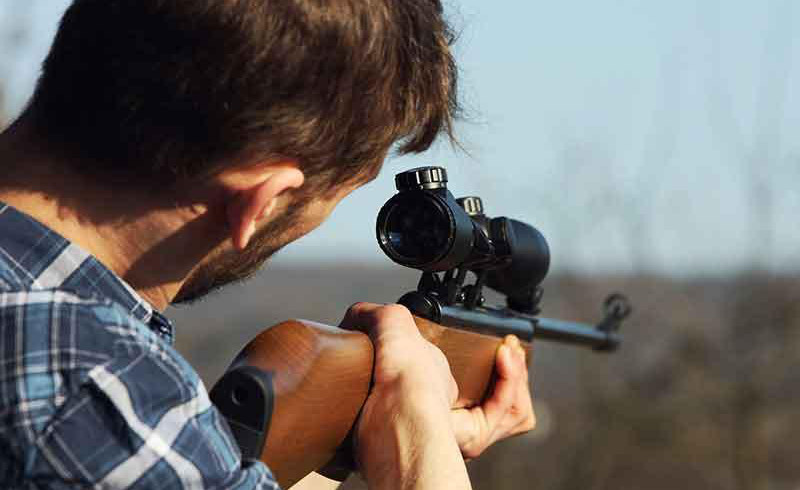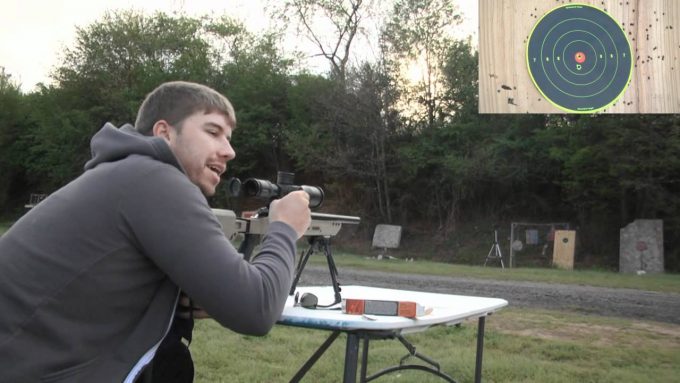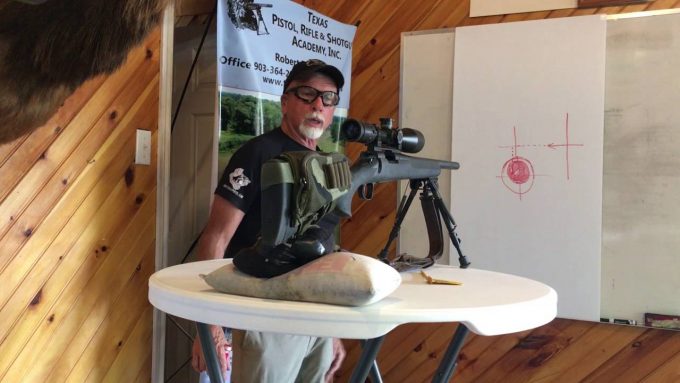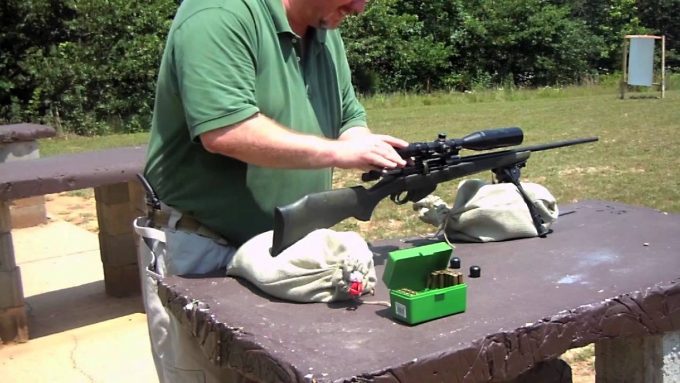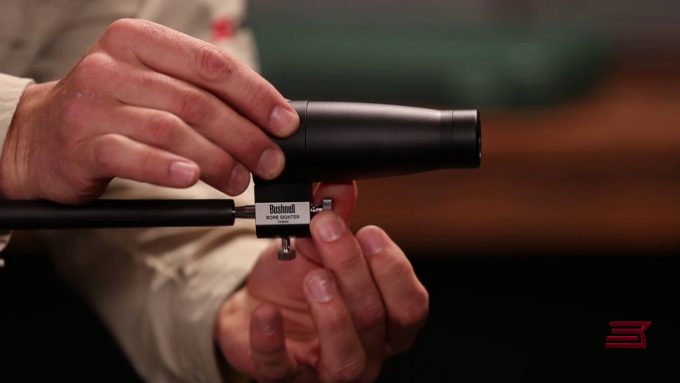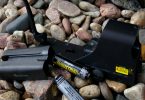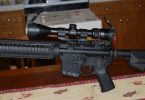Today’s optics is far superior to the glass we used years ago and a scope can be tailor made for an individual to wring astonishing accuracy from his or her rifle. Bore sighting is simply aligning iron sights or optic with a rifle prior to shooting so that zeroing the rifle can be very easier.
Regardless of whether you’re hunting black bear, Cape buffalo, or some other big game animal, it is very important that you properly prepare your equipment for the hunt to hit what you’re aiming at, so the first step is to make sure your rifle is properly zeroed. But you might be wondering just how to boresight a rifle.
Sighting-in is one of the most important parts of preparing for hunting season. There are several ways to bore sight a gun, and while some may be better than others, they all work well if you take the necessary steps at the range where you are ready to zero the rifle (sight in). The concept of bore sighting is fine, but there is a different method of bore sighting which falls in line with the true nature of the term.
Bore sighting is an easy preliminary method of sighting-in that doesn’t require special equipment but can be intimidating and frustrating for inexperienced shooters. This can be a tricky process, but with a little know-how and some help from your scope manual, you might just get it done without issue.
Mount the scope on the rifle
Install mounts and make sure they are secure is the first step to sighting in a rifle. After your rifle mounts are installed and the hardware is tightened, install scope rings and don’t tighten it too much but leave it loose enough to adjust its position. Make sure you’re putting them on in the right direction, as low as possible while still allowing for clearance, and with a slight coating of oil for rust prevention.
A good scope on cheap mounts that cannot stand the violent vibration of a powerful gun renders the whole rifle unreliable. A scope of dependable quality can cost as much as, or more than, the rifle it will be mounted on.
Bore sighting
After you have properly mounted your rifle scope according to the manufacturer’s guide, it is time to use the bore sight to get the rifle scope roughed in. To boresight, set the gun in a vise or bed it on sandbags. Point the muzzle in a safe direction.
Remove the bolt and peer through the bore at a target and adjust the scope settings left or right and up or down to bring the crosshair into line with the bore. Bore-sighting your rifle and scope will ensure that the first shots fired will be on the paper at close range of somewhere between 25 to 50 yards before zeroing to make the process easier and faster without wasting ammunition.
The objective of bore sighting-in is to get the rifle’s sights and its bore in alignment. Once you’ve done this, you’re now ready to zero your rifle for your type of ammo. Most rifle ranges have a bore-sighting device known as a collimator, which can be used by following simple instructions. A gun shop or gunsmith may boresight your rifle for you.
Line up the scope
After the sight is leveled and the eye relief is set, tighten your scope rings and re-check all hardware to make sure it is secure, check the screws on the scope rings, and scope mounts. A loose screw can result in poor accuracy in the field.The screws that secure your rifle to the stock should be tightened based on the manufacturer’s specification as they are very vital for accuracy. Refer to your manual or speak with the manufacturer to ascertain the proper amount of torque for each bedding screw.
Position your rifle so that you can look through the barrel and see the target, keeping a good sight picture and your eye at the appropriate distance from the scope. Adjust the windage and elevation on the scope until it’s aligning as closely as possible.
Keep It, Sturdy
Set up your rifle on a very stable rest. Stabilizing the rifle makes it possible to establish an accurate shot pattern. Sandbags and wood blocks can also make for a solid platform. This will allow for a steady rifle both at the barrel and at the butt of the gun.Few shooters have the experience or ability to get the necessary accuracy without these tools. A good shooting rest with sandbags or backpack on top of the shooting bench will help ensure that your results are more about your rifle and ammunition than about you.
Use proper techniques
It is crucial that you employ proper shooting techniques while at the range so that you can get the most accurate zero possible. It is recommended to shoot from a bench while placing your rifle on some a backpack or sandbags. Proper trigger and breathing control are also vital to the accuracy of your shot.
If you breathe while shooting your bullets, this can result in your point of impact being different than your point of aim. So, before you take a shot, you should exhale and hold your breath through the shooting process and until your bullet has impacted your target.
Rifle sight adjustment
In target shooting where the aiming point is uniform shape and size, it is customary to have the sights adjusted so that the bull’s eye rests on the top of the front sight. When adjusting your iron sights, keep it in mind to move the rear sight left-right and up-down in the direction you want your shots to move. Just put your shoulder to the butt of your rifle, look through your scope to ensure it is aiming where it should be.
While keeping the rifle in a comfortable shooting position, adjust the scope left/right or up/down until there is no black ring around the objective. With a scope, read the manufacture’s manual to know whether the scope’s adjustments are 1/2-, 1/4- or 1-inch at 100 yards.
Create a target
This is one of the crucial things you need to do in order to make sure your rifle is sighted-in correctly so you can hit the target you’re aiming at. If you did everything correctly, your POI should be nearly centered on the target. You’re almost sighted in already, and you will be after just a few more small tweaks.
You’ve got three shots to shoot a group and make sure you’re right on target. To reliably confirm the accuracy of your rifle and scope, you must shoot from a rest. Again, don’t move your rifle. Instead, adjust your scope’s windage and elevation knobs until the cross hairs line up perfectly in the center of that target.
If you’re unable to consistently achieve this level of accuracy target, you should have your rifle checked by a gunsmith and then use additional time practicing at the range as accuracy is the measure of a rifle’s ability to trigger repeated shots close to each other.
Sighting-In at the range
If your riflescope has only been bore-sighted, you are not fully ready to hunt. You must sight-in to zero your ammo for a successful hunting. This is not a test of your shooting ability but that of your rifle’s. It’s still important to take your rifle to the range and go through a few practice rounds to get the feel of the scope and make small adjustments as necessary.
The objective is to get three bullets within the accepted target area. Three shots show where the rifle is shooting. A proficient shooter can typically group the three shots within an area with the size of a quarter at 100 yards. You immediately see that with a 100-yard zero, you can position the crosshairs on a deer and trigger that shot from close up and out to 100 yards without adjusting your target.
At 100 yards, the general rule is the cross hairs should be right on the bull’s eye, or where an open sight the aim should be just below the bull’s eye. This part of the bore-sighting process is about finding out the potential of your rifle and to eradicate any human error before you get onto the hunting field.
Find the right bullet
By sighting in a rifle, you will determine how high the rifle will shoot at different known distances with the right bullet. Note that each rifle is different and your rifle will tell you immediately which bullets it does not like. Your job is to find the one it prefers.Pointed bullets carry a very higher ballistic coefficient and, for this reason, they will shoot flatter at long range and buck the wind better. If you are switching from non-coated bullets to coated bullets, clean the bore and let the shot completely coat the bore before testing for accuracy.
If you are moving from coated bullets to non-coated bullets, ensure you give the bore a complete cleaning. We suggest taking different bullet weights to the range.
Testing different types of ammunition
All ammunition does not shoot the same; this includes different brands. Most modern rifles fire bullets of medium weight with the best hunting accuracy. Many rifles will perform well with one brand of ammunition over another. If you can afford to buy at least two bullet weights and two different brands of ammunition for sighting-in that will be good.
Look for what will be the most accurate in your particular rifle. To determine this, fire at least two three-shot in each type of ammunition using fresh targets each time and see the results of which one gives you the tightest groups.You typically find the right combination through time on the range and trial and error. Once you have found the brand that your rifle responds best to, use the other ammunition for training.
Keep your scope clean
Do you see a lot of copper shining back at you? If you do, a good cleaning is in order. We see a lot of “shoot-out” hunting rifles that just need a good cleaning to restore their accuracy. Accuracy decreases as your barrel accumulate powder residue and copper fouling. The consistency of the scope cleaning is one of the factors necessary for consistent shot placement.Quality cleaning kits can improve your accuracy. Double-check to make sure that your scope images are clear and that the target is still visible through the bore.
Record and reference each shot
Ensure you record where the shot hit the target. Many shooters like to keep a matching target on the bench while they are shooting. Check your shot, then mark the target beside them, you can better track your progressions to confirm any scope accuracy and adjustments.You will quickly learn where and how to sight well at first shot with your experience. This eliminates much of the guessing about which shot was which.
Wrap up
Sighting in your rifle scope is not hard. Having patience and utilizing the techniques listed above will help you achieve an accurate sighting in. Once you have the bore sight installed, simply place your rifle on a vise or other stable surface, and aim it at a test target, and dial in your sights. Nothing could be simpler.
Sighting in your rifle make it viable for you to enjoy your time at the range you’ve spent all season pursuing. While the entire process may not be as easy, it’s designed to make sure your scope performs well, lasts, and eliminate injury to yourself and others. Note that this process works well for all rifles.
We hope that we have given you the confidence to sight in your rifle. We’d appreciate it if you would “Like” to share us your experience about bore sighting a rifle. Let us know about it in the comments below.


